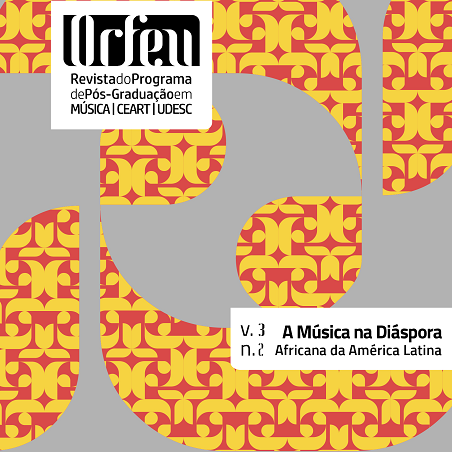Know My Language, Know My Music, Know My Culture: adapting a music education unit in regional Australia to meet the individual needs of pre-service teachers
DOI :
https://doi.org/10.5965/2525530403022018189Mots-clés :
Australian Curriculum, equity, Indigenous music, music education, online learningRésumé
Music is an integral part of society. How it is taught and represented in educational institutions reflects the educational values. Moreover, it is part of a nation’s cultural fabric. The paper will discuss the issues pertaining to music education courses in Australia and postulate why an individualised curriculum at the pre-service teacher stage is necessary. From this, an existing unit has been adapted to meet the needs of pre-service teachers in regional and remote areas of Australia. A mix methods approach of Critical Discourse Analysis and Participation Action Approach has been used. This has been necessary to identify and understand the issues of identity, access and inclusiveness. Through these changes, the unit was transformed to better align with the individual needs of pre-service teachers, the changing environment of schools and the Year 11 and 12 music curriculum.
Téléchargements
Références
ARGSTATTER, H. Perception of basic emotions in music: Culture-specific ormulticultural? Psychology of Music, v.44, n.4, p.674–690, 2016.
AUSTRALIAN GOVERNMENT DEPARTMENT OF EDUCATION AND TRAINING. National Aboriginal and Torres Strait Islander Education Strategy. Retrieved from https://www.education.gov.au/national-aboriginal-and-torres-strait-islander-education-strategy, 2015.
AUSTRALIAN CURRICULUM, ASSESSMENT AND REPORTING AUTHORITY. The Arts. Retrieved from http://www.acara.edu.au/curriculum/learning-areas-subjects/the-arts, 2016.
BAKER, W. J. Fully online learning in a pre-service teacher music education unit in Australia: Student perspectives. In W. Sims (Ed.), Proceedings of the International Society for Music Education 30th World Conference on Music Education Thessaloniki, Greece, p. 45-51, 2012.
BAKER, W. J. Student use of demonstration videos as learning tools in fully online arts education. In J. Wright (Ed.). Regional and global cooperation in educational research. Proceedings of the Australian Association for Research in Education National Conference. Sydney, NSW, 2013.
BIGGS, J. The reflective institution: Assuring and enhancing the quality of teaching and learning. Higher Education, v.41, n.3, p. 221-238. doi: 10.1023/A:1004181331049, 2001.
BIGGS, J. B.; TANG, C. Teaching for Quality Learning at University. Buckingham, UK: Open University Press, 2011.
BLAINEY, G. The Tyranny of Distance: How distance shaped Australia’s history. Australia: Pan MacMillan, 1966.
BOWEN, E. Voices from the Living Heart: Healing Australia’s dark past. In Laurence, F and Urbain (Eds). Music and Solidarity: Peace and Policy, New Brunswick: Transaction Publishers, v. 15, p.101-16, 2011.
BURTON, B.; DUNBAR-HALL, P. Teaching About and Through Native American Musics: An Excursion into the Cultural Politics of Music Education. Research Studies in Music Education, v.19, 56-64, 2002.
CAIN, M. Dabbling or deepening – Where to begin? Global Music in International School Elementary Education. In P. S. Campbell, J. Drummond, P. Dunbar-Hall, K. Howard, H. Schippers, & T. Wiggins (Eds.), Cultural diversity in music education: Directions and challenges for the 21st century Brisbane: QCRC, p.103-112, 2005.
CAMERON, A.E. The Class Teaching of Music in Secondary Schools in Victoria 1905-1955: An investigation into the major influences affecting the development of music as a class syllabus in Victorian Secondary Schools. Unpublished Masters Thesis, TheUniversity of Melbourne: Melbourne, 1969.
COMMONWEALTH OF AUSTRALIA. National Review of Music Education: Augmenting the diminished. Canberra: Department of Education, Science and Training, 2005.
DRUMMOND, J. Re-thinking Western art music: A perspective shift for music educators. International Journal of Music Education, v.28, p.117-126, 2010.
FREIRE, P. Pedagogy of the Oppressed. New York: Continuum, 1970.
GARVIS, S.; LEMON, N. Are the Arts important in schooling?: Clear messages from the voices of pre-service generalist teachers in Australia. Australian Journal of Music Education, v.2, p.98-104, 2013.
GOLDEN, M. “On Music, Interconnection, and Consciousness” In Laurence, F and Urbain (Eds). Music and Solidarity: Peace and Policy, New Brunswick: Transaction Publishers, p.31-46, 2011.
HOWARD, K.; SWANSON, M.; SHEHAN CAMPBELL, P. The Diversification of Music Teacher Education: Six Vignettes from a Movement in Progress. Journal of Music Teacher Education, v.24, n.1, p.26-37, 2014.
HUNT, L.; CHALMERS, D. University Teaching in Focus: A learning centred approach. Camberwell, Australia: Australian Council for Educational Research, 2012.
KEMMIS, S.; MCTAGGART, R. (2005). Participatory Action Research. In Denzin, N.K. Lincoln, Y.S. (Eds). The Sage Handbook of Qualitative Research. Thousand Oaks: Sage, 2005.
LEE, S. General Music Teachers’ Backgrounds and Multicultural Repertoire Selection National Association for Music Education, v.36, n.2, p.38-44, 2018.
LIERSE, S. The development of instrumental music programs in Victorian Government secondary schools 1965 to 2000. Doctor of Philosophy (PhD) RMIT University, Melbourne, 2005. https://researchbank.rmit.edu.au/view/rmit:161170
LIERSE, S. The National Review of School Music Education: What is the present state of music education in schools? Australian Association for Research in Music Education. Adelaide, 2006.
MINISTERIAL COUNCIL OF EDUCATION, EMPLOYMENT, TRAINING AND YOUTH AFFAIRS. Melbourne Declaration of Educational Goals for Young Australians. Retrieved from http://www.curriculum.edu.au/verve/_resources/National_Declaration_on_the_Educational_Goals_for_Young_Australians.pdf, 2008.
MISON, A. ‘How can Northern Territory schools implement a quality arts education for every student’. In Northern Territory Department of Education. Queensland Educational Leadership Institute, 2015.
NORTHERN TERRITORY BOARD OF STUDIES. Policy: Curriculum, Assessment and Reporting Policy: Transition to Year 8. Northern Territory Board of Studies: Darwin, Northern Territory, August 16, 2013.
REEVES, C.; REEVES, P. Designing online and blended learning. In University Teaching in Focus: A learning centred approach. Camberwell, Australia, Australian Council for Educational Research, 2012.
SALAVUO, M. Open and informal online communities as forums of collaborative music activities and learning. British Journal of Music Education, v.23, n.3, p.253-271, 2006.
SMALL, C. Music, education, society. Hanover: Wesleyan University Press, 1977.
VOLK, T. M. Music, education, and multiculturalism: Foundations and principles. New York, NY: Oxford University Press, 2004.
WODAK, R. What CDA is about – a summary of its history, important concepts and its developments. In Wodak, R. and Meyer, M. (Eds). Methods of Critical Discourse Analysis. London: Sage, p.1-13, 2000.
YUNUPINGU, M. Speech to delegates at the Indigenous music education symposium. Northern Territory Music School: Darwin, Northern Territory, 2009.
Téléchargements
Publiée
Comment citer
Numéro
Rubrique
Licence
(c) Tous droits réservés ORFEU 2018

Ce travail est disponible sous la licence Creative Commons Attribution 4.0 International .






